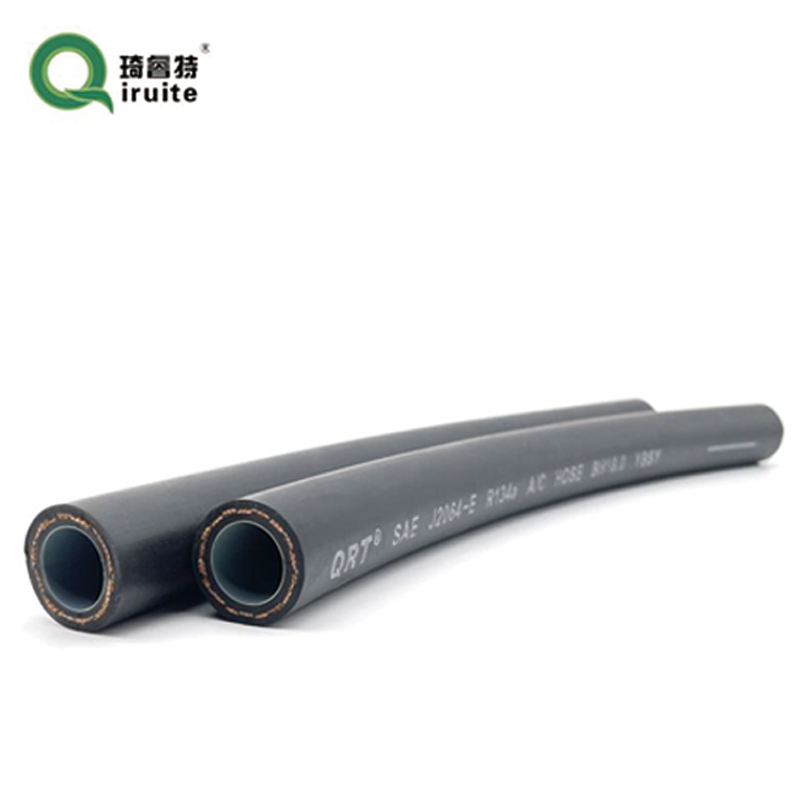R134a Refrigerant Charging Hose for Efficient HVAC System Maintenance and Service
Understanding R134a Charging Hoses A Guide for Effective Refrigerant Management
In the realm of automotive and HVAC systems, the proper handling of refrigerants is crucial for efficient operation. One essential tool in this process is the R134a charging hose. This article delves into the importance of R134a charging hoses, their construction, proper usage, and safety considerations.
What is R134a?
R134a, or tetrafluoroethane, is a hydrofluorocarbon (HFC) often used as a refrigerant in various applications, including automotive air conditioning and refrigeration systems. Replacing the older R12 refrigerant, R134a is more environmentally friendly as it has a lower ozone depletion potential. However, it still requires careful handling to prevent environmental impact and ensure system efficiency.
The Role of Charging Hoses
Charging hoses are vital components of any refrigerant management system. These hoses facilitate the transfer of refrigerant to and from systems, enabling technicians to add, recover, or reclaim refrigerants like R134a. A charging hose typically comes equipped with specific fittings and couplings designed to connect to R134a service ports securely. They are often color-coded, with blue for low-pressure and red for high-pressure sides, to ensure correct and safe operation.
Construction of R134a Charging Hoses
Charging hoses are constructed to withstand the pressures associated with refrigerant systems. They are typically made from durable materials such as rubber or reinforced materials that can handle both the high pressures of the refrigerant and the extreme temperatures often encountered in automotive and HVAC applications.
Each hose features a service valve connection, often built with features that prevent accidental disconnection and refrigerant loss. Additionally, many R134a hoses come with built-in gauges that provide real-time pressure readings, which are critical for diagnosing system issues and ensuring the correct amount of refrigerant is added.
Proper Usage of R134a Charging Hoses
Using R134a charging hoses effectively requires a thorough understanding of refrigeration systems and charging procedures. Technicians should follow these guidelines when using charging hoses
r134a charging hose

1. Safety First Always wear appropriate personal protective equipment (PPE), including gloves and goggles, when handling refrigerants.
2. Check Hoses for Damage Before use, inspect hoses for any visible signs of wear, cracks, or leaks. Damaged hoses should be replaced immediately to prevent refrigerant loss.
3. Connect to the Correct Ports Ensure the hose is connecting to the appropriate high-pressure (red) and low-pressure (blue) service ports. Incorrect connections can lead to dangerous conditions and system damage.
4. Gauge Monitoring If your hose has built-in gauges, monitor them continuously during operation. This will provide insight into the system’s performance and help make necessary adjustments.
5. Follow Manufacturer Guidelines Each system and refrigerant comes with specific charging instructions. Always refer to the manufacturer's guidelines to ensure compliance and avoid issues.
6. Be Mindful of Environmental Regulations Since R134a is a regulated substance, ensure that the refrigerant is managed in compliance with local and national regulations. Leak detection and proper recovery practices are vital to protecting the environment.
Maintenance and Storage
Proper maintenance and storage of R134a charging hoses can extend their lifespan and ensure they function efficiently. After each use, it is essential to purge the hose to eliminate any remaining refrigerant. Store hoses in a cool, dry place away from direct sunlight and extreme temperatures to prevent degradation.
Conclusion
R134a charging hoses are indispensable tools for anyone working with refrigerants. Understanding their construction, proper usage, and safety protocols is crucial for effective refrigerant management. By prioritizing safety and adherence to guidelines, technicians can ensure the reliable operation of HVAC and automotive systems while contributing to a more sustainable environment. With the right knowledge and tools, handling R134a becomes a straightforward task that supports the continued efficiency of modern cooling systems.
-
Ultimate Spiral Protection for Hoses & CablesNewsJun.26,2025
-
The Ultimate Quick-Connect Solutions for Every NeedNewsJun.26,2025
-
SAE J1401 Brake Hose: Reliable Choice for Safe BrakingNewsJun.26,2025
-
Reliable J2064 A/C Hoses for Real-World Cooling NeedsNewsJun.26,2025
-
Heavy-Duty Sewer Jetting Hoses Built to LastNewsJun.26,2025
-
Fix Power Steering Tube Leaks Fast – Durable & Affordable SolutionNewsJun.26,2025

